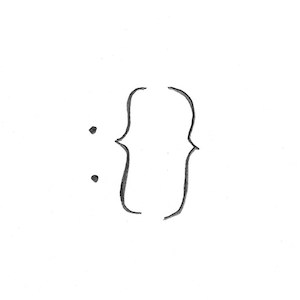
I finally like Typescript
When I started using Typescript instead of plain Javascript I felt like it slowed me down and killed the joy of programming. I’m not talking about the learning curve, it’s about the kind of code I was writing.
First steps
My previous experience with static typing was with languages like C++ or Java. Object-oriented programming was the main type of programming I used in them. When I started with Typescript I also felt the urge to pack all my code in classes. I was under the impression that all the power of types comes from carefully prepared classes and the communication between objects. An interface was to me something that provides a bridge between different implementations.
Classes, however useful in many cases, became first-class citizens in my implementations. I felt obliged to come up with a perfect OOP structure for my code. Not a single piece of code was allowed in my mind to be just a function - when needed I put them as static methods of some class, obviously. That wasn’t really my style when I was working with Javascript. I used to create classes only when I needed to couple some state with methods and I somehow thought I’m not supposed to keep my coding style with Typescript.
The game
My first project in Typescript was a game I wanted to put as an easter egg on my personal website. The progress so far is miserable and with the current pace it won’t be released until 2030, that’s for sure. Anyway, I wanted to make different types of units controlled by computer. Some of them would be stationary, some of them could move. Some of them could cause damage, some of them would be peaceful as a poodle (as long as they are very peaceful). Composition for the win, I said to myself. That led to some research and I found a very promising approach. The code looked like this:
export interface IMovable extends Unit {
canMove(): boolean
step(cost: number): void
}
export function Movable<TBase extends Constructor<Unit>>(
Base: TBase,
baseMovementPoints: number
) {
return class extends Base implements IMovable {
protected movementPoints: number = 0
canMove() {
return this.movementPoints > 0
}
step(cost: number) {
// ...
}
}
}What happens there:
- introduce an interface
IMovablewhich has properties and methods - function Movable takes a base class and some extra options as parameters
- function Movable returns a new, dynamically created class that implements the
IMovableinterface
The idea was that all behaviors are implemented in a similar manner, so if a unit is able to both move and attack the code would look like this:
const Warrior = Attacking(Movable(Unit, 100))
const myWarrior = new Warrior()Putting this all together turned out to be a massive pain though. I spent a lot of time thinking about the proper way to merge behaviors, find tricky ways to deal with dynamically created classes and - what was the biggest motivation killer - I didn’t like to work on that code at all.
The alternative
After a few weeks of attempts to make it more enjoyable I gave up on object-oriented programming. It’s not my cup of tea, especially not for front-end code. What I really wanted to have is a regular object like:
const myWarrior = {
armor: 20,
health: 100,
attack: 10,
move: 5,
}and then have some functions that update it. Surprisingly to me, it’s a totally legit approach in Typescript and I can still benefit from static typing. What I found extremely helpful is using interfaces for plain objects.
Wanna see if the unit can still move?
function canMove(unit: {move: number}) {
return unit.move > 0
}Wanna see if the unit is still alive?
function isAlive(unit: {health: number}) {
return unit.health > 0
}How about taking damage?
function takeDamage<T extends { health: number }>(
unit: T,
value: number
): T {
return {
...unit,
health: unit.health - value
}
}All of those 3 functions above can be called on my warrior object. I get the benefits of static typing and I can keep my preferred coding style.
I also started to like interfaces, but only when used for objects instead of classes:
interface IMovable {
move: number
}
function canMove(unit: IMovable) {
return unit.move > 0
}Summary
I no longer force myself to write object-oriented code. Whenever applicable, I prefer creating functions that deal with plain objects that are shaped as described by interfaces.